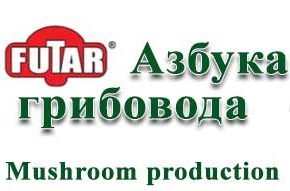Substrate processing methods
Technologies (or methods) of plant raw materials preparation for the cultivation of oyster mushrooms can be divided into two groups, depending on the elimination method of mold spores and bacteria:
in chemical methods (also cold treatment) various chemical agents are used to destroy spores. This is lime, hydrogen peroxide and several other preparations the names of which will not be given here. Their use is unacceptable for the reason of workers’ safety.
Attempts to treat the substrate with ozone are dangerous for health and can even be life threatening. In addition, they do not give the desired result – the substrate still gives a high level of spoilage.
Cold processing of raw materials is an extremely inconsistent and in most countries this way of substrate processing is forbidden at the legislative level.
Therefore, here we will focus on the methods relying on heat treatment.
There are four of them:
– hydrothermal treatment
– Tunnel pasteurization
– Xerothermal treatment
– Sterilization in an autoclave.
Each processing method is carried out using an algorithm based on the knowledge of microbiological processes occurring in the substrate.
In all methods you can change some stages at your own choice, but only be if you are confident about understanding both the sequence of your actions and their consequences.
Hydrothermal treatment and tunnel pasteurization
These approaches are based on the fact that the raw material is first soaked in water for a long time. In case of hydrothermal treatment this process should last at least for 12 hours. In case of tunnel pasteurization – at least one day. There is an option of soaking the plant material and its reloading once a day. During this procedure the substrate becomes also softened.
Processing temperature.
Dormant spores (not hydrated) have a protective coating and can withstand heating above 100 degrees without losing their viability. When soaking, the majority of the spores hydrate and become vulnerable to temperatures of 70°C.
Is it possible to maintain the heat treatment temperature below 70 degrees? Yes, it is! But it should be not lower than 63 degrees and the treatment should last very long – not less than 36 hours. In addition, it is not economically profitable, you risk getting substrate spoilage, due to the fact that you can not control microbiological processes in real-time occurring during heat treatment. In a hydrothermal process, such a prolonged treatment can also lead to the development of anaerobic microorganisms.
For oyster mushroom blocks we give a recommendation to keep the heat treatment temperature in both hydrothermal and tunneling technologies not lower than 68 degrees and not more than 75. The recommended upper limit is associated with the phenomenon of so-called “spores thermal activation”. It occurs when due to the influence of high temperature, spores which did not have time to hydrate activate their germination upon further cooling and grow much faster than without activation. Therefore it is extremely advisable not to boil the substrate!
These recommendations are based on data processing and the long-term experience of many enterprises.
The fact that you managed to prepare a substrate without spoilage with a violation of processing technology, means only that the circumstances have been favorable to you:
For example, the raw material was quite clean microbiologically or you have just started working and did not accumulate a bacterial population, or the mycelium was active enough and could suppress the development of competitors.
In any case – It is not reasonable to jeopardize the stable operation of the enterprise, violating technological processes for the sake of economy.
If you still have a desire to experiment with timing and processing temperatures – write down your results in a log. In addition to experiment data make sure to indicate:
– composition of raw materials,
– raw materials humidity,
– presence of foreign impurities
– a method of sanitizing equipment and premises,
– the dose of the introduced mycelium, its strain and manufacturer, as well as incubation conditions.
All these data are necessary in order to make a complete analysis of the experiment.
Processing time
Number of hours needed for the heat treatment of raw materials:
Hydrothermal treatment
Sunflower husk – not less than 3 hours, in case of pure raw materials, with low humidity, without impurities and foreign odours.
Straw, a mixture of straw with hay and/or husks – no less than 6-8 hours.
Tunnel pasteurization – for all plant material mixtures – not less than 15-20 hours, depending on the technological task sheet and raw materials composition.
When inoculating with mycelium, you must follow certain rules, so we have created a separate article about them.
Xerothermal treatment and sterilization.
In case of xerothermal treatment dry material (this is an important condition) is steamed for 2-3 hours. Here all hydrated and sprouted spores are destroyed, and the rest of them do not have enough time to hydrate. Then goes a rapid drop of substrate temperature using cold water, which has a pH of at least 8 due to the use of lime or soda.
Sterilization of substrate is carried out in autoclaves within 40 minutes after reaching the working temperature inside the package of at least 121 degrees. The substrate is called “sterile” because almost 100% of the spores die during this temperature treatment.
These two methods impose very high demands in terms of microbiological purity of inoculation (spawning) rooms and other rooms of the clean zone. If the air in the clean zone in contaminated with spores – they will grow along with oyster mushroom mycelium compete with it significantly.
Conclusion: Oyster mushroom mycelium is a living organism, the development of which requires not only a certain composition of plant raw material, but also the lack of competition from contaminants. Therefore, proper heat treatment of the substrate in oyster mushroom blocks ensures the absence of spoilage and increases yields.
